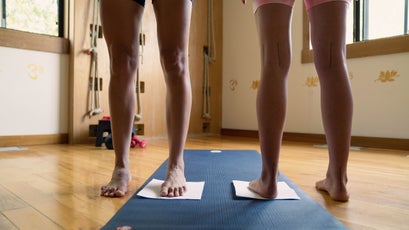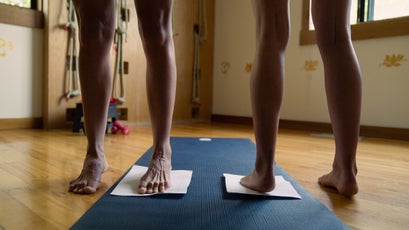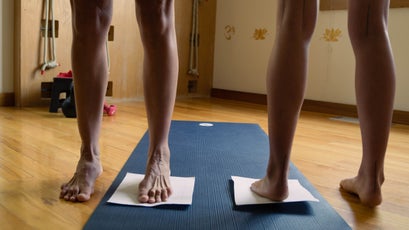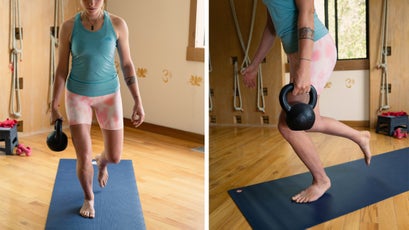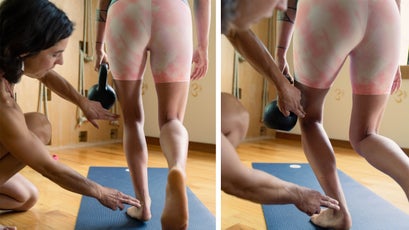How to Fix Fallen Arches
6 min readOur bodies are a bit like buildings: the bodily structure is continuously resisting gravity. Now, visualize a skyscraper with a collapsed foundation—it’s not just the ground flooring that are compromised: the overall architecture is at stake. Our ft and ankles are our basis, and weaknesses here can direct to a host of troubles in other places. Fallen arches—also known as overpronation—are a widespread source of local foot and ankle challenges and can guide to challenges more upstream, in the knees, hips, and backbone.
Repairing Overpronation Is An Inside Position
Overpronation happens when the vertical, curved condition of our normal foot arch collapses whilst bodyweight bearing. The composition of the hips in a natural way inclines the body to collapsed arches: the femur bones angle inward, from a wide pelvis to a additional narrow base of help at the ft, exposing our bodies to forces that we have to battle with postural energy. Furthermore, genetics, muscle and connective tissue weakness, alignment, and gait mechanics can all lead to fallen arches. Symptoms fluctuate but incorporate clear pain, tendinitis, and numbness at the foot and ankle as effectively as a lot more sneaky grievances up the kinetic chain like knee and hip agony.
Ordinarily, overpronation goes hand-in-hand with too much inside rotation of the femurs, which you can see in the video below. You can examine out your alignment by referencing a couple of anatomical landmarks: the vertical tendons of the hamstring muscle tissue guiding your knees and the achilles tendons powering your ankles. These should really be oriented straight back again. With too much interior rotation, you could see them angled a little bit outward.
A person frequent alternative to overpronation is supportive shoe insoles, which fill the space of the arch and bodily protect against it from collapsing. But that does not deal with why the arch is falling in the first area. The hip muscle tissue, precisely the external rotators, sit under the glute muscle tissues and assistance fortify the neutral position of the femurs and reduce legs. Activating and strengthening these muscle groups supports excellent alignment by means of the lower body and can assist the natural way raise and assist the arches. Above time, the human body’s intrinsic potential to self-restore weak muscle, nerves, and connective tissue (including bone, ligaments, tendons, and fascia) enables us to make long lasting improvements to our composition. The beneath exercises will assistance you recognize and maintain alignment through constant strengthening and mobility get the job done.
The Moves
Deep Hip External Rotator Activation: The Fingertip Raise
What it does: Engages the exterior hip rotators to align the anatomical landmarks we determined over and lift the arches. Helps develop power, elasticity, and resilience in the feet and ankles, knees, and hips.
How to do it: Stand barefoot and picture that you have two flat discs less than equally of your ft. Have interaction the deep hip rotators by ‘spinning the discs’ without having shifting your toes. This will feel like a gentle twist of your left hip counterclockwise and your suitable hip clockwise. Your femurs should spin open into exterior rotation. Relax your quads—the work need to be coming from your hips. Maintain even stress through the toes and the balls of your toes.
Your foot place really should continue being static apart from for a apparent carry of the arch, adequate to allow you to tuck your fingertips beneath your arch shut to the front of your heel. Just go considerably plenty of to orient those people tendon landmarks in their ideal position—otherwise, you can overcorrect into supination, putting too much excess weight on the exterior of the foot and lifting off of the major toes. You may well want the assist of a mirror or a mate at first.
Volume: Do three to five repetitions of activating and enjoyable. Conduct this alignment many periods for each day, or whenever you come across you standing.
The next moves are component of the Ground Pressure sequence from Samsara Knowledge, where by I perform as a coach. They will assist your body retain the above structural alignments, and bolster your foot and ankle complicated all the way up to your hips, developing a stable foundation for motion. Ditch your sneakers for these routines to get acquainted with muscles and connections in your ft and legs that you may possibly have under no circumstances felt just before.
Foot Activation
What it does: Repairs the neuromuscular circuits from toes to mind, by activating dormant muscle mass of the foot and ankle.
How to do it: Stand barefoot with a corrected arch position. Then, activate the muscle tissues of both of those feet by gripping the ground with your toes. It must feel like a fast snap that elevates your heels about a half-inch and delivers you into an lively forefoot stance. Maintain your knees straight and tender, and keep away from doing a calf raise—this need to all originate with the feet. The gripping motion ought to interact the achilles tendons, the calf muscle tissue, the hamstrings, and the glutes. If you are acquiring a challenging time accomplishing this transfer, check out inserting a flat sheet of paper below your toes and trying to scrunch it.
Volume: Carry out one to 3 sets of 5 to fifteen repetitions. Perform this go often during the week.
Solitary Leg Forefoot Isometric Hold
What it does: Rebuilds the connective tissues of the foot and ankle, strengthens muscles from feet to trunk.
How to do it: Stand on one particular leg, shift your body weight into your forefoot, curl your toes to grip the ground, and then carry your heel. Maintain for 30 to 40 seconds. Use your totally free fingertips towards a wall for stability if needed. You should really truly feel the perform in your ft, achilles tendons, calf muscular tissues, and thighs. Your priority here is to preserve your arch and your hips secure. Start off with bodyweight, and increase load in the form of a dumbbell or kettlebell if it feels much too quick. If you decide to use body weight, keep it in the similar hand as the standing leg. Stop if you have any suffering.
Quantity: Complete a single to three 30- to 40-second retains, resting for two minutes in involving. Repeat two to 4 times a 7 days.
Double-Leg Hop in Floor Power Foot Situation
What it does: Promotes bone health and fitness, elasticity, and correct foot and ankle stiffness.
How to do it: Assume your active forefoot placement with corrected arches. Stiffen your ankle joint, keeping it business, near to a ideal angle, and get started hopping with lower amplitude. In this shift you are making an attempt to teach your feet and legs to endure swift dynamic forces in the energetic forefoot posture so that you can far better perform speedy movements like managing and bounding without having overpronation. You also might commence to come to feel the springiness of your plantar fascia and achilles tendons that will allow us to hop, jump, and operate with elasticity. Adjust velocity, peak, and amplitude over time, as tolerated. Halt if you have any pain or exhaustion.
Volume: Hop for 10 to 30 seconds, then relaxation for a moment. Repeat one particular to 3 periods. Do this among two and five occasions per week.
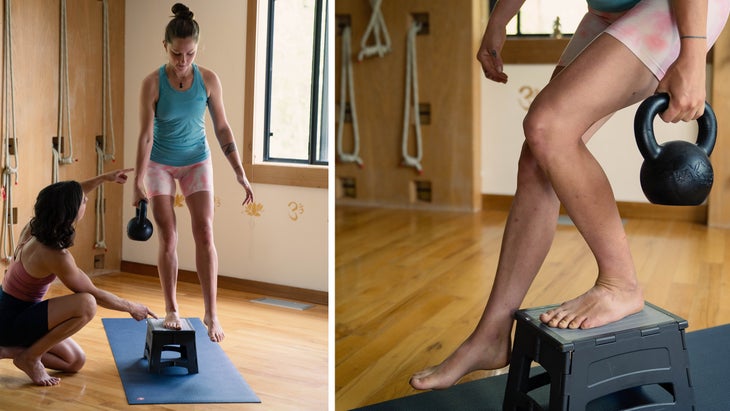
Solitary-Leg Squat on Box or Stage
What it does: Builds toughness and energy by bettering the integrity of your arches and alignment, and problems your solitary-leg squat manage and depth.
How to do it: You will require a action and a kettlebell or free excess weight for this transfer. Stand with a person foot on the action, knee bent, and the other foot dangling in mid-air in front of you. Your standing foot should really be flat, with corrected arch position. Keep the fat plumb under your shoulder and next to your hip on your standing-leg side. Keep your shoulders secure and your trunk upright. As you squat, only go as reduced as you can whilst retaining alignment by way of the hip, knee, and arch. Then, continue to be small and pulse further with every repetition. Use your free of charge fingertips against a wall for harmony if wanted. Pick a body weight that lets you to complete 6 to eight repetitions with out sacrificing your kind. Fantastic variety is the priority, and you should come to feel this in the deep hip rotators, glutes, and hamstrings less than in your quads. Stop if you have any agony.
Quantity: Two to 5 sets of 6 to eight repetitions, with two minutes of rest in in between.

